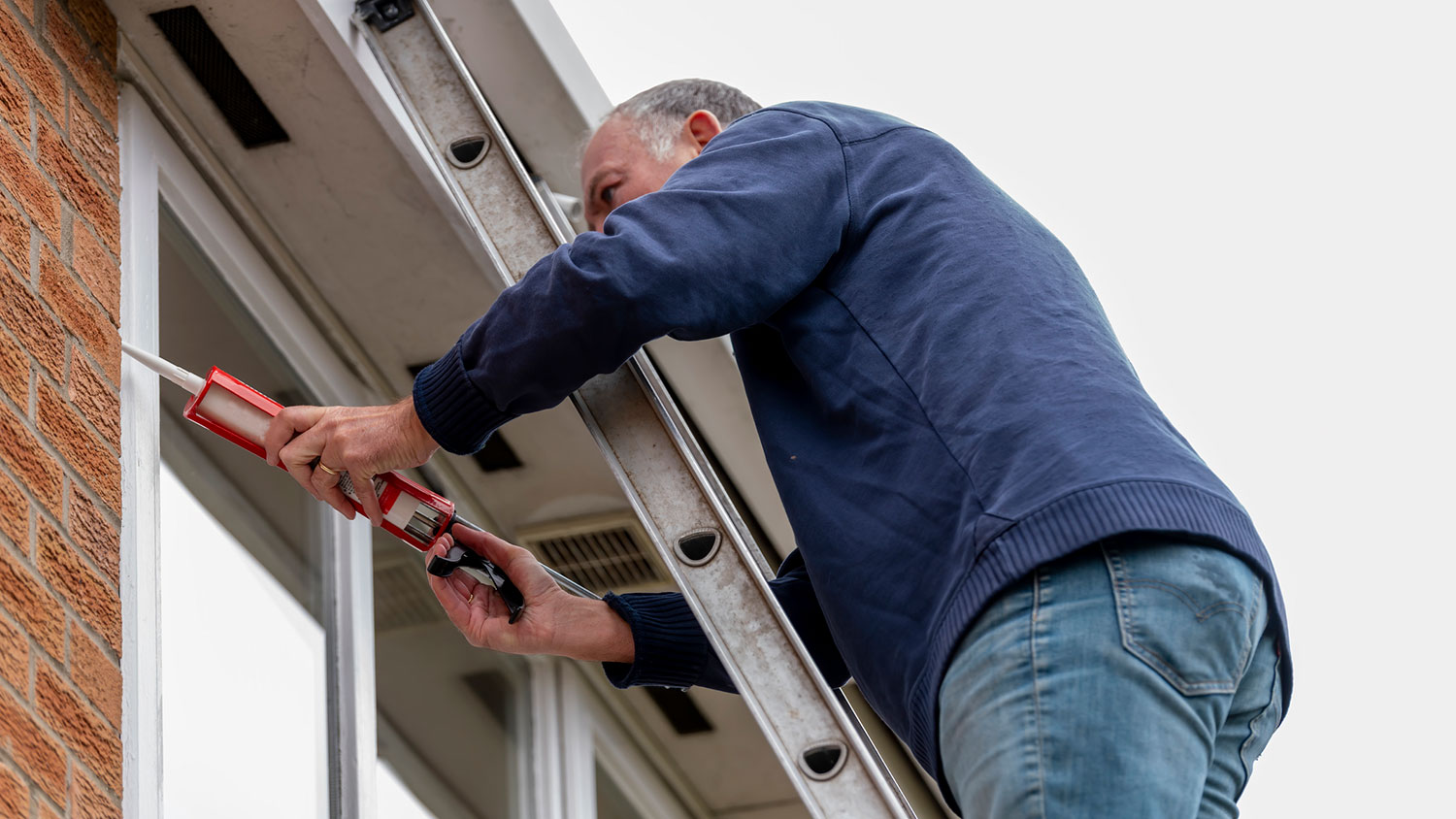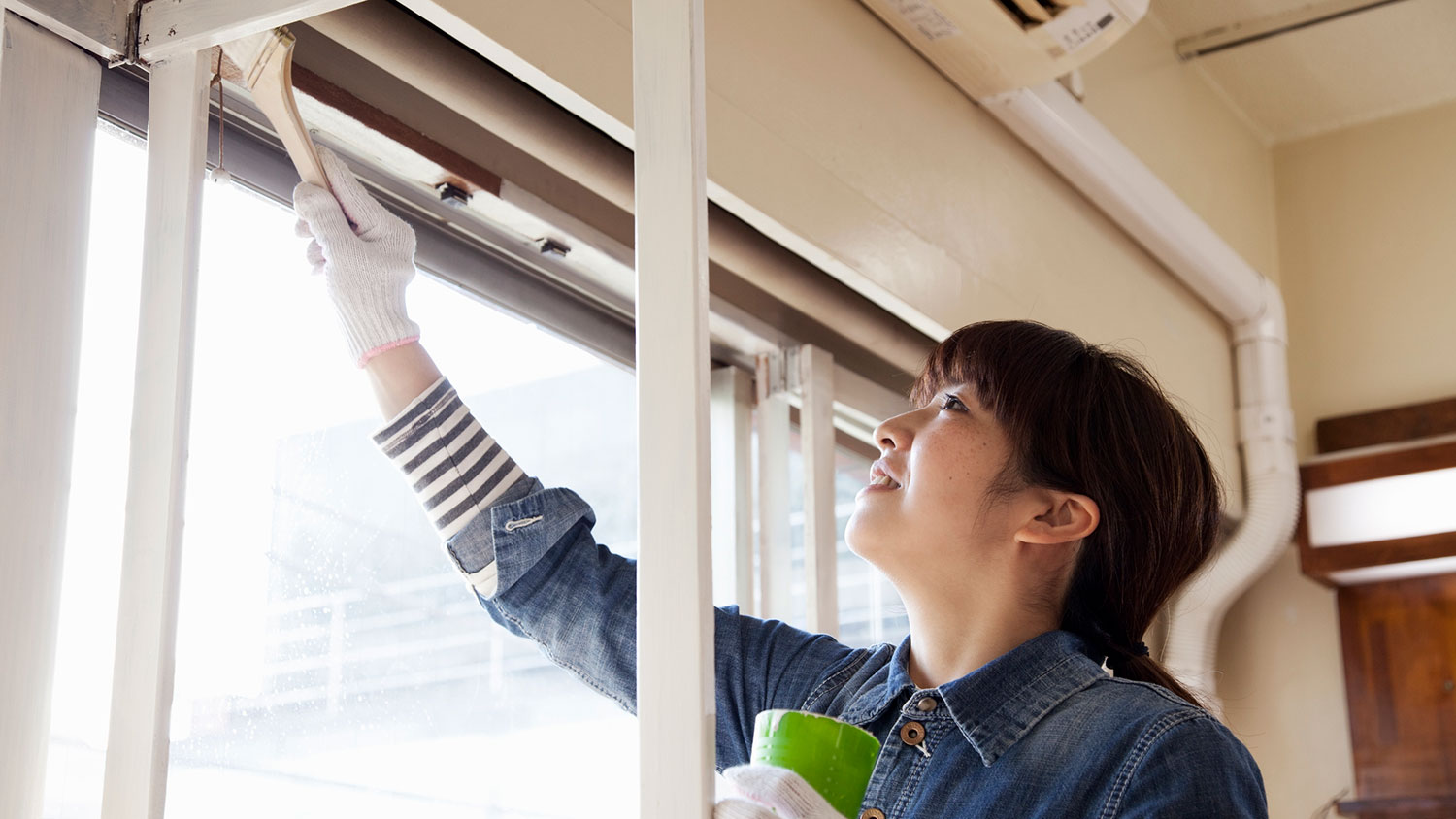Try These 8 Tips to Breathe Life Back Into Old Windows
Make those vintage windows shine like new


Restoring old windows is a labor of love, and one that will pay off dividends if you keep up the maintenance. Historic windows, both wood and steel, often last longer than modern windows, so it’s smart to repair old windows when you can rather than replacing them. These tips to restoring old windows will help you bring your vintage windows back to life.
1. Get Ahead With Routine Maintenance
The easiest way to restore old windows is to tackle the project when you have minimal damage, rotting, or other paint and stain malfunctions, meaning if you catch the problem early, it will save you the headache of stripping them down and rebuilding the window coatings later on. Make window checks a part of your routine home maintenance and regularly inspect weather stripping, paint, stain, glass, and lifting mechanisms at least once a year to stay ahead of the inevitable wear and tear of Mother Nature.
2. Check the Seals for Leaks

If your house feels unusually drafty, it’s possible your windows are leaking. A leaky window seal can be a problem for many reasons. Not only will it let in the cold winter air, as well as the sweltering summer heat, but it is a potential sign that you need to get outside and do routine maintenance against the elements.
Old windows are often glazed in with a special putty that needs to be regularly painted and sealed. While useful for its purpose, the glazing—like anything exposed to the outdoors—breaks down from wind, rain, and sun exposure. Plan on repainting the exterior of old windows at least every five years if you’re in an environment with a lot of weather fluctuations, every eight years if you’re in a milder climate.
3. Weatherize Your Windows
Another way to keep your house air-tight and avoid drafts is by semi-permanently weatherstripping around window openings. While it might be a technical error to seal up moving windows against the elements, if you’re not ever going to open them it makes sense from an energy perspective. Polypropylene weather seals are useful for this task, as is a quality caulking.
If you’d like to keep your windows functional, adhering a piece of weatherstipping on the bottom or top of your window sashes can go a long way toward keeping cold air out and warm air in. For entrance doors that see heavy use, consider installing a more durable solution like metal or nailed felt, which will be able to take the abuse of constantly being opened and closed.
4. Watch for Wood Rot
If your house has wooden windows, rotting frames are a serious concern. Oftentimes, you can selectively restore the wooden window where it’s damaged rather than replacing the frame entirely, which is not only cost-effective but more environmentally friendly. During your inspections, pay particular attention to the bottom sash and upper edges that are more exposed to moisture and sun. If the wood is damaged beyond DIY repair, a local carpenter will be able to help you replace the pieces.
5. Look for Foggy Glass
Windows that have a foggy appearance are likely double-pane replacements of the original glass inserts. Once moisture has infiltrated the space between these window panes, you’ll need to replace them to clear up the condensation that has become permanently embedded in the glass.
If you’re looking to retain the character of old windows, you’ll want to repair any broken glass with original product when at all possible, though a professional can make modern window inserts with both energy-efficiency and noise-infiltration properties to resemble old windows. Call a local glazier if you need help addressing any window glass issues.
6. Use Hardwood Instead of Soft for Repairs
If your old window frames do have wood that need replacing, consider using hardwood instead of soft. While softwood windows expand and contract more with the seasons, they also decay much quicker than hardwood does. So if longevity is your goal, you’ll want to stick with a hardwood like oak, cherry, or maple for your window repairs.
7. Repaint the Frames When Needed

Many times when a window appears to be falling apart, it’s simply the paint that’s failing rather than the frame itself. Paint is the first line of defense for protecting a surface, so if the paint is flaking off, it’s time to sand, patch, prime, and paint your windows. Damaged paint can often be a sign of moisture intrusion from somewhere else, so as you’re repairing or maintaining the window frames, take a good, hard look at the surrounding roofing or siding to ensure you’re preventing future damage.
8. Replace Pulleys and Ropes
With all of their character and nostalgia, old windows have a system of weights and balances to assist with opening and closing the heavy sashes. The pulleys and ropes found along and inside the side of traditional wood windows are attached to a large piece of lead. While the system is a good one, the ropes deteriorate and break after a while. Replacing the rope and lubricating (or replacing the pulley) is a great method to increase the longevity of old windows. There should be a knockout panel hidden in the window frame that makes these pieces accessible.
If you aren’t into the idea of a DIY window restoration, you can find local window repair professionals near you.





- How Long Do Windows Last and When Should You Replace Your Windows?
- When to Replace Windows: 10 Signs That It’s Time to Start Shopping
- 7 Common Window Problems and How to Avoid Them
- Types of Old Windows and When to Replace Them
- 14 Things to Consider Before Buying Windows
- How to Choose the Best Replacement Windows for Old Houses
- 10 Tips on How to Make Windows More Energy Efficient
- Should You Replace All Windows at Once? Here’s Why the Answer Is Yes
- How to Seal Windows for Winter: A Complete Guide
- 4 Ways to Repair Fogged Windows for Clearer Views















